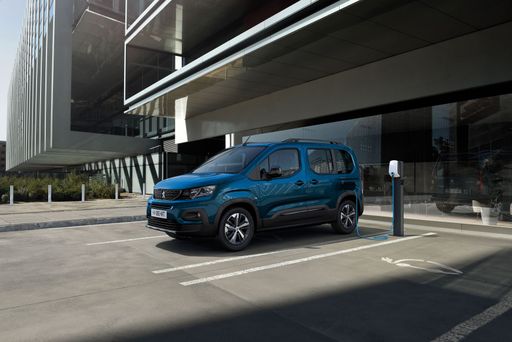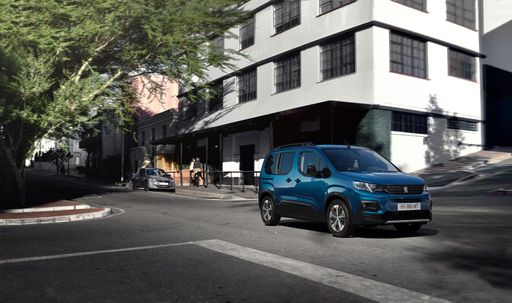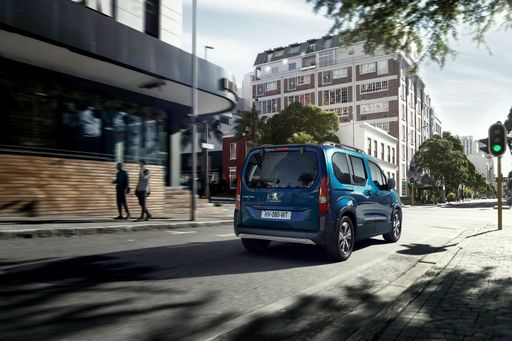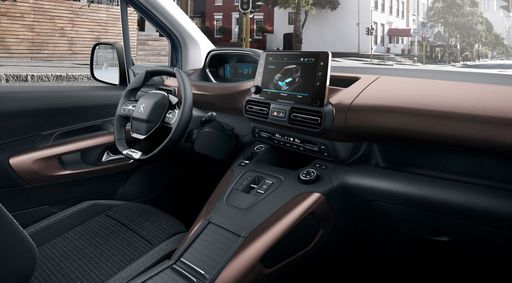Peugeot Rifter vs Renault Trafic Bus – Which car suits you better?
Compare performance, boot capacity, efficiency and price at a glance.
Find out which car is the better choice for you – Peugeot Rifter or Renault Trafic Bus?
Costs and Efficiency:
Price and efficiency are often the first things buyers look at. Here it becomes clear which model has the long-term edge – whether at the pump, the plug, or in purchase price.
Peugeot Rifter has a clearly advantage in terms of price – it starts at 23800 £, while the Renault Trafic Bus costs 38200 £. That’s a price difference of around 14419 £.
Fuel consumption also shows a difference: Peugeot Rifter manages with 5.60 L and is therefore a bit more efficient than the Renault Trafic Bus with 6.70 L. The difference is about 1.10 L per 100 km.
Engine and Performance:
Power, torque and acceleration are the classic benchmarks for car enthusiasts – and here, some clear differences start to show.
When it comes to engine power, the Renault Trafic Bus has a slightly edge – offering 170 HP compared to 136 HP. That’s roughly 34 HP more horsepower.
In acceleration from 0 to 100 km/h, the Renault Trafic Bus is slight quicker – completing the sprint in 10.60 s, while the Peugeot Rifter takes 10.80 s. That’s about 0.20 s faster.
In terms of top speed, the Peugeot Rifter performs hardly perceptible better – reaching 184 km/h, while the Renault Trafic Bus tops out at 180 km/h. The difference is around 4 km/h.
There’s also a difference in torque: Renault Trafic Bus pulls clearly perceptible stronger with 380 Nm compared to 300 Nm. That’s about 80 Nm difference.
Space and Everyday Use:
Whether family car or daily driver – which one offers more room, flexibility and comfort?
Seats: Renault Trafic Bus offers evident more seating capacity – 9 vs 7.
In curb weight, Peugeot Rifter is evident lighter – 1561 kg compared to 2031 kg. The difference is around 470 kg.
In maximum load capacity, the Renault Trafic Bus performs slightly better – up to 4000 L, which is about 500 L more than the Peugeot Rifter.
When it comes to payload, Renault Trafic Bus to a small extent takes the win – 982 kg compared to 814 kg. That’s a difference of about 168 kg.
Who wins the race?
The Renault Trafic Bus proves to be leaves the rival little chance and therefore becomes our DriveDuel Champion!
Renault Trafic Bus is the better all-rounder in this comparison.

Renault Trafic Bus
Peugeot Rifter
Der Peugeot Rifter beeindruckt mit seinem robusten Design und seiner hohen Vielseitigkeit, die ihn ideal für Familien und Outdoor-Abenteuer macht. Der Innenraum ist geräumig gestaltet und bietet zahlreiche innovative Technologien, die den Komfort und die Sicherheit der Insassen erhöhen. Zudem überzeugt der Rifter mit seiner hervorragenden Fahrdynamik, die sowohl in der Stadt als auch auf längeren Strecken für ein angenehmes Fahrerlebnis sorgt.
details @ Peugeot / Stellantis Media
@ Peugeot / Stellantis Media
 @ Peugeot / Stellantis Media
@ Peugeot / Stellantis Media
 @ Peugeot / Stellantis Media
@ Peugeot / Stellantis Media
 @ Peugeot / Stellantis Media
@ Peugeot / Stellantis Media
Renault Trafic Bus
The Renault Trafic Bus is a versatile and spacious option for those needing to transport multiple passengers comfortably. With its modern design and practical features, it is well-suited for both business and leisure purposes. Its efficient engine and smooth handling make it a reliable choice for long journeys.
details
 @ Peugeot / Stellantis Media
@ Peugeot / Stellantis Media
|
|
|
|
|
Costs and Consumption |
|
|---|---|
|
Price
23800 - 36600 £
|
Price
38200 - 54400 £
|
|
Consumption L/100km
5.6 - 6 L
|
Consumption L/100km
6.7 - 7.2 L
|
|
Consumption kWh/100km
18.3 - 19.1 kWh
|
Consumption kWh/100km
-
|
|
Electric Range
328 - 339 km
|
Electric Range
-
|
|
Battery Capacity
-
|
Battery Capacity
-
|
|
co2
0 - 158 g/km
|
co2
175 - 189 g/km
|
|
Fuel tank capacity
50 L
|
Fuel tank capacity
80 L
|
Dimensions and Body |
|
|---|---|
|
Body Type
High Roof Estate
|
Body Type
Bus
|
|
Seats
5 - 7
|
Seats
8 - 9
|
|
Doors
4 - 5
|
Doors
4
|
|
Curb weight
1561 - 1941 kg
|
Curb weight
2031 - 2352 kg
|
|
Trunk capacity
322 - 1050 L
|
Trunk capacity
-
|
|
Length
4405 - 4755 mm
|
Length
5080 - 5480 mm
|
|
Width
1848 mm
|
Width
1956 mm
|
|
Height
1818 - 1837 mm
|
Height
1973 - 1974 mm
|
|
Max trunk capacity
3000 - 3500 L
|
Max trunk capacity
3200 - 4000 L
|
|
Payload
489 - 814 kg
|
Payload
718 - 982 kg
|
Engine and Performance |
|
|---|---|
|
Engine Type
Electric, Diesel
|
Engine Type
Diesel
|
|
Transmission
Automatic, Manuel
|
Transmission
Manuel, Automatic
|
|
Transmission Detail
Reduction Gearbox, Manual Gearbox, Automatic Gearbox
|
Transmission Detail
Manual Gearbox, Automatic Gearbox
|
|
Drive Type
Front-Wheel Drive
|
Drive Type
Front-Wheel Drive
|
|
Power HP
102 - 136 HP
|
Power HP
110 - 170 HP
|
|
Acceleration 0-100km/h
10.8 - 13.6 s
|
Acceleration 0-100km/h
10.6 - 16.5 s
|
|
Max Speed
132 - 184 km/h
|
Max Speed
161 - 180 km/h
|
|
Torque
250 - 300 Nm
|
Torque
300 - 380 Nm
|
|
Number of Cylinders
4
|
Number of Cylinders
4
|
|
Power kW
75 - 100 kW
|
Power kW
81 - 125 kW
|
|
Engine capacity
1499 cm3
|
Engine capacity
1997 cm3
|
General |
|
|---|---|
|
Model Year
2024
|
Model Year
2023 - 2025
|
|
CO2 Efficiency Class
A, E, F
|
CO2 Efficiency Class
G, F
|
|
Brand
Peugeot
|
Brand
Renault
|
What drivetrain options does the Peugeot Rifter have?
The Peugeot Rifter is offered with Front-Wheel Drive.
The prices and data displayed are estimates based on German list prices and may vary by country. This information is not legally binding.
